In 1998, we joined a tour group that retraced the journeys that merchants and traders would have taken, as they made the journey towards China’s capital of Chang’An (长安), in present day Xi’an (西安).
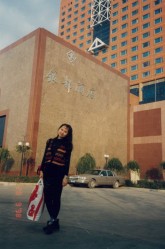
Despite being anglophiles, we embarked with a mandarin speaking group and came out for the better with the knowledge of our own ancestral culture.

Now our trip started at in Urumuqi (乌鲁木齐), which ironically was not part of the Silk Road. While it was located on the northern edges of the famed caravan trade, it was largely abandoned for a long time after the demise of the Tang dynasty.
Today, the city is the capital of the largest Chinese province of Xinjiang (新疆). Its importance today was due to the re-establishment of dynastic control over the region in the 1700s. Flanked by the Tianshan (天山) mountains to the south and the Junggar basin to the north, this city is the new “Energy” capital of China! It is also an excellent base to explore the region and boasts of modern amenities expected of world class cities.
 Our journey here was for 2 nights’ stay from which we fanned out to the surrounding attractions though day trips.
Our journey here was for 2 nights’ stay from which we fanned out to the surrounding attractions though day trips.
Heavenly Mountains
Let’s start with the beautiful mountain ranges of the Tianshan. Because it is a range rather than a mountain in itself, we will focus on the “heavenly” lake (天池) that we visited. At 1900m above sea level, this lake of approximately 5km² is located at the north side of the Bogda mountain (Mongolian for God). It is not far from Urumuqi and easily accessible by an excellent network of roads.
And indeed when one visits the lake, one get the feeling of being in heaven. It can be quiet, with only the sounds of wind ruffling at the water’s edge. Or the babble of tourists from behind you! LOL. Otherwise, this is a peaceful spot to sit and contemplate the meaning of life. Yeah, it is kind of far to do this but hey with the mountains in the background what’s not to like?

But the point for us really was the fact that there is a fair amount of water resources here. In a region seemingly fraught with aridness, snowmelt appears to be abundant.
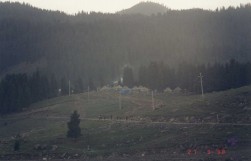
Thus it was no surprise for us to see small flocks of sheep and goats being tendered. We caught smoke waffling in the distant, and realize that there are actually folks living out here, and in traditional yurts too! We later found out that the region is still inhabited by various tribes of Kazakhs, Tajiks and other Turkic nomads, though the Uighurs are the majority.
Nomadic life
While we traveled in a small coach bus for our journeys, our guide determined that we should have a taste of what it is like to use a more traditional form of transport – the horse. So, off we drove towards Nanshan (南山). Not to be confused with the pastures, because we did not head to the prairies but rather the forested parts of the mountains.

No. We did not ride on our own. Being city slickers, we would probably not be best handling the horses on our own. So, young ladies and men straddle up behind you and guide the horses through the valley of pine forests. And because it is late summer, the air felt fresh and aromatic. Not having to control the horse while you ride sure is a luxurious activity. It’s the modern day of having a driver or taking a taxi! Heheh.
When traveling in this parts, one of the highlights not to be missed is a visit to a traditional yurt and partake in a session of tea and traditional desserts. We had caught glimpses of these circular tents from afar while journeying to the heavenly lake.
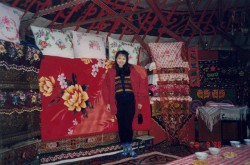
But nothing quite prepares you for the real experience! Our horse ride ended at one such yurt.
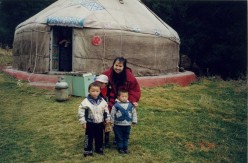
First thing we noticed was the kaleidoscope of carpets, quilts and pillows in the homely yurt. Definitely a woman’s touch here!For sure one had to sample the butter tea that they make from horse’s milk – just be courteous and gulp it all down!
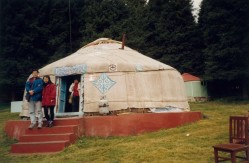
Fortunately they did not serve the liquor version of the milk…phew. Yes, today the yurts are more like permanent homes as the local government encourages. But there was a time when these folks dismantle and re-assemble the yurts, following their flocks as they graze across the steppes.
Wellsprings of life
Karez.
That word describes how life continued to prosper in this otherwise dry area. What was that? You recall the heavenly mountains and the lake we visited? That means water exist in reasonably copious quantities right? But how would it be brought to the valleys and plains?
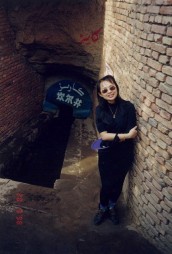
The Karez is a series of long underground tunnels that beings the melting waters of the mountains to the villages and towns along the Silk Road. We compare them to the Roman aqueducts, except in this case the source is purely from the mountains and not rivers as the Romans would have similarly tapped. However the mechanism is the same – the use of gravity to channel water down from a greater height. And at regular intervals, vertical access tunnels are dug to haul water up.
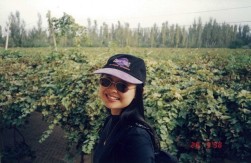
It is this technique of harnessing water that helped the great Silk Road trade cities such as Jiaohe and Gaochang (read here) to rise and prosper. This is great knowledge isn’t it? But it wasn’t what we were out here for. Rather we are looking at how this source of water supported the cultivation of fruits and vegetables.
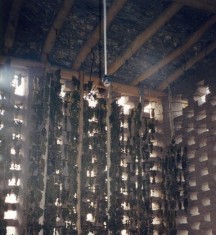
Until today, this region remains an important agricultural area. Surprising isn’t it? And think about this : they have lots of grapes too. Said to be really sweet (our guide claims 24% sugar content), most are dried and packed as raisins. But we have seen wine being made with them too – and tasted some. You might enjoy it!
Our adventures are just beginning.
Why not read on here for how we started on the road towards China proper? It will be nearly 2000km of road and rail which we will convince you is one of the best trips to get on. Start on your own Silk Road adventure!
This journey took place in October 1998













This is the sort of trip I love 🙂 — Though happy to stay in 5* as well 🙂
LikeLiked by 1 person
The stay in Urumuqi city was in a 5* hotel, not quite the international level of the same standard but not too bad.
LikeLiked by 1 person
Looks like an amazing adventure!
LikeLiked by 1 person
Oh indeed it was. But then the conditions were “harsh”
LikeLiked by 1 person
Not for the faint-hearted like me and fam.
LikeLiked by 1 person
What an adventure. 😊
LikeLiked by 1 person
Oh yes it was. Horse riding, drinking yak butter milk, almost freezing over… all in a day’s work there!
LikeLiked by 1 person
👍🏼
LikeLiked by 1 person
Wow, what a fascinating place! I loved the mountain ranges, the tunnels, and the level of history involved in this excursion! Lovely.
LikeLiked by 1 person
We enjoyed our time there too. We only hope that the lifestyle of the local nomads (well they were already getting sedentary) do not change too much!
LikeLike